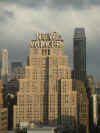 |
New York
Architecture Images- Midtown
New Yorker Hotel |
|
architect
|
Sugarman & Berger |
|
location
|
481 Eighth Ave., bet. W34 and W35. |
|
date
|
1930 |
|
style
|
Art Deco |
|
construction
|
three-storey limestone base, a set-back
tower of brown brick |
|
type
|
Hotel |
|
|
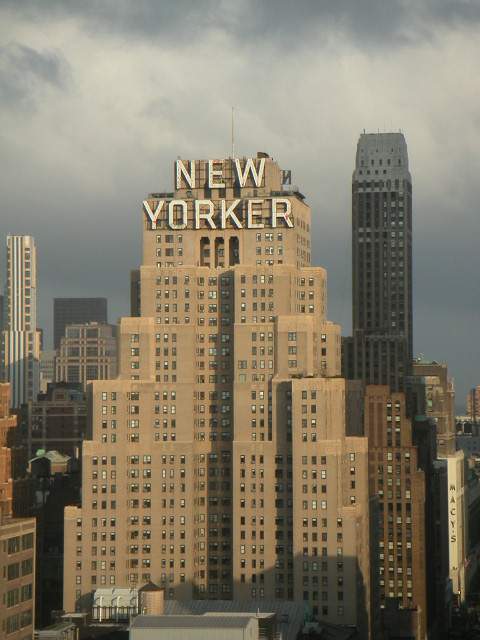 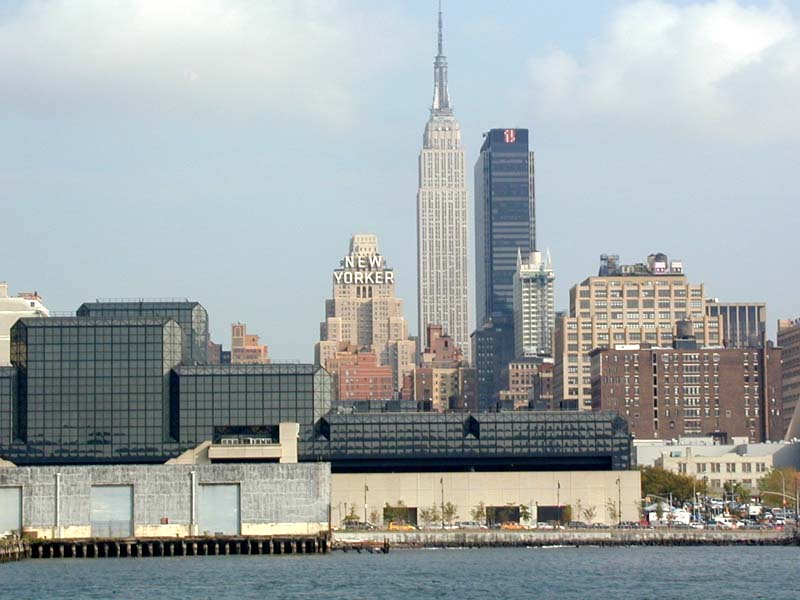 |
|
|
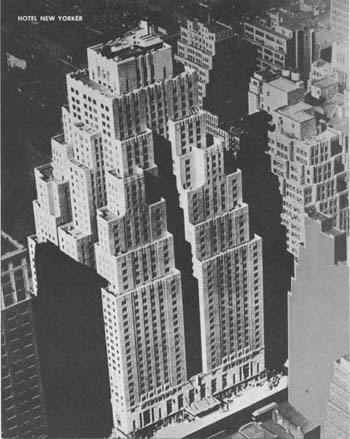 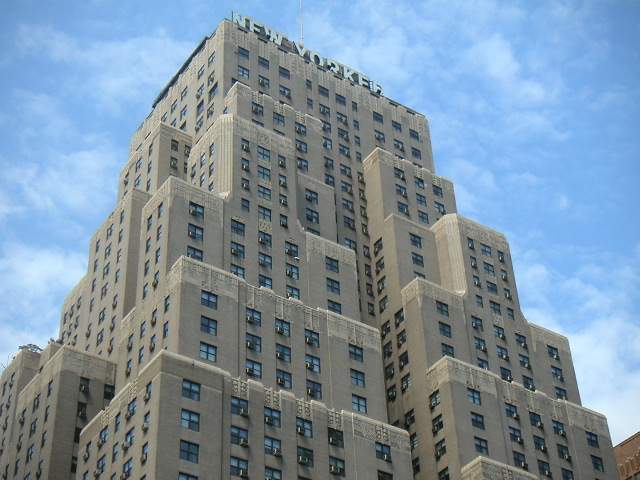 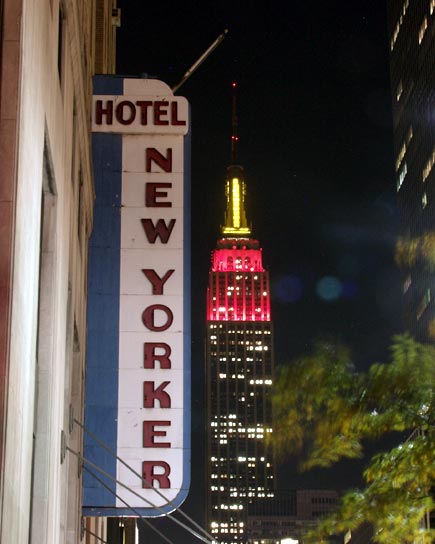 |
|
|
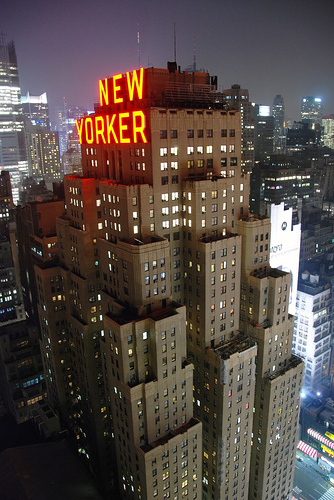 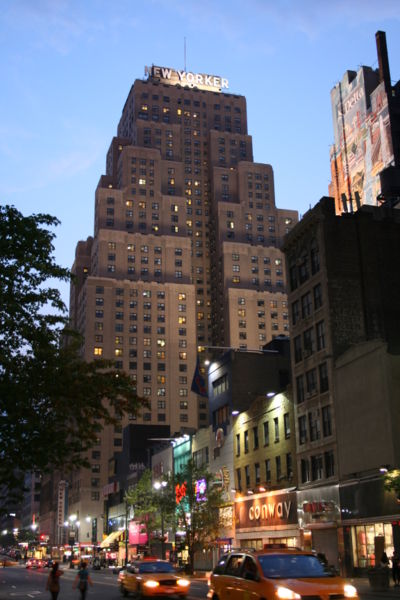 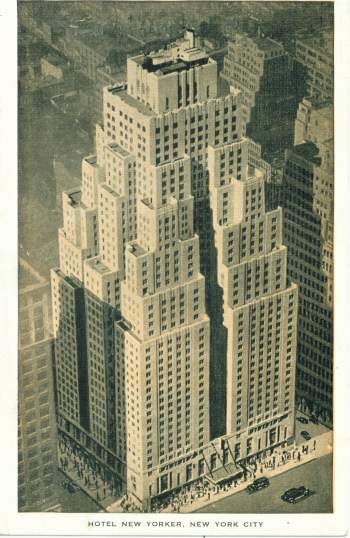 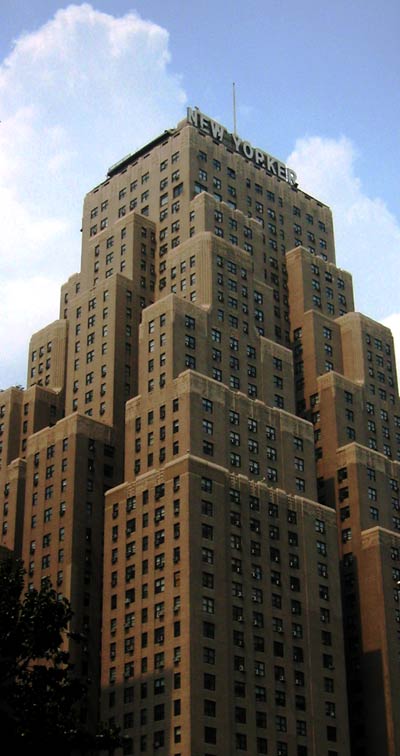 |
|
|
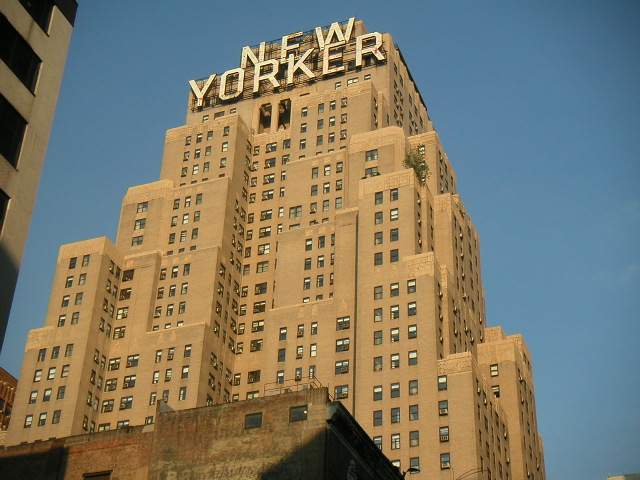 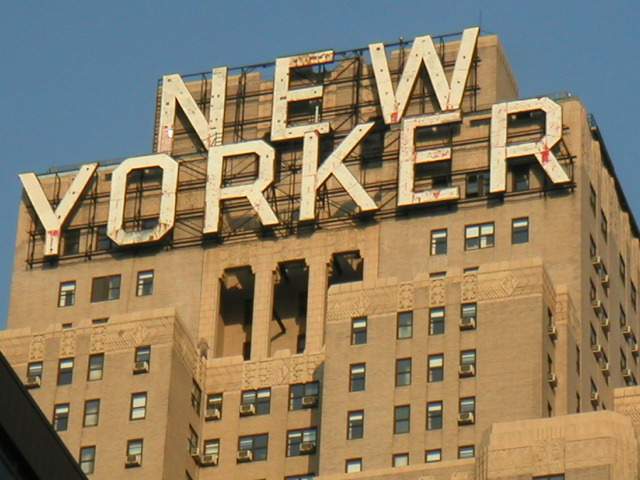 |
|
|
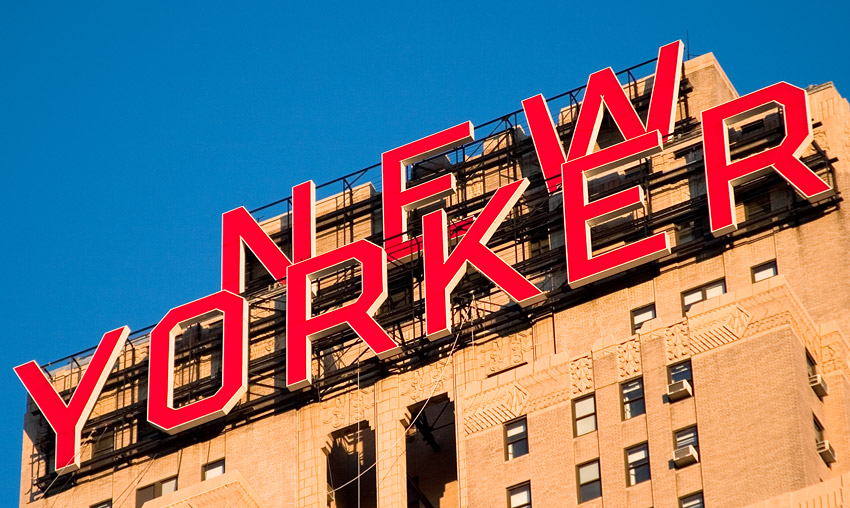 |
|
|
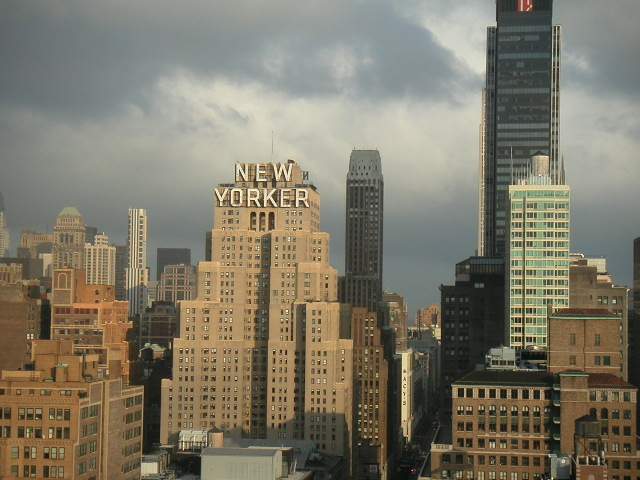 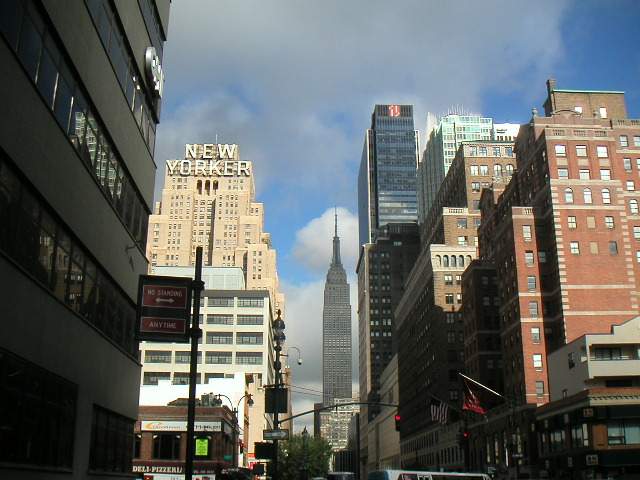 |
|
|
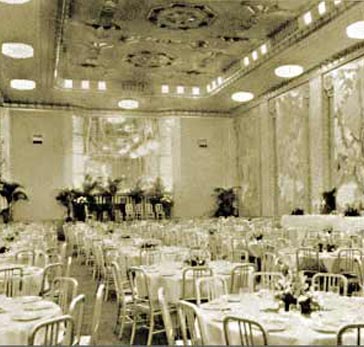 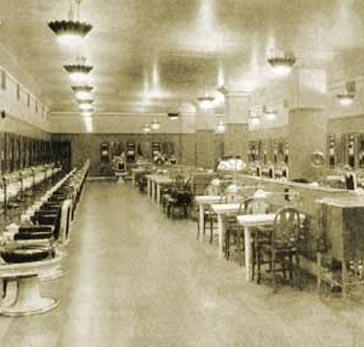 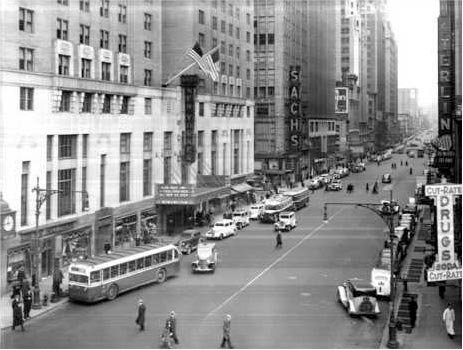 |
|
|
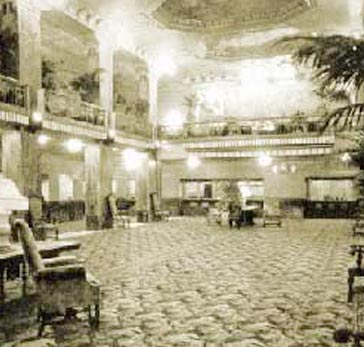 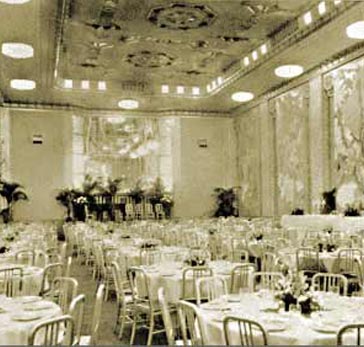 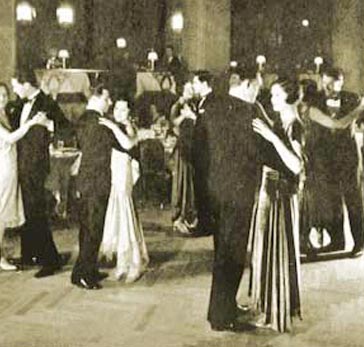 |
|
|
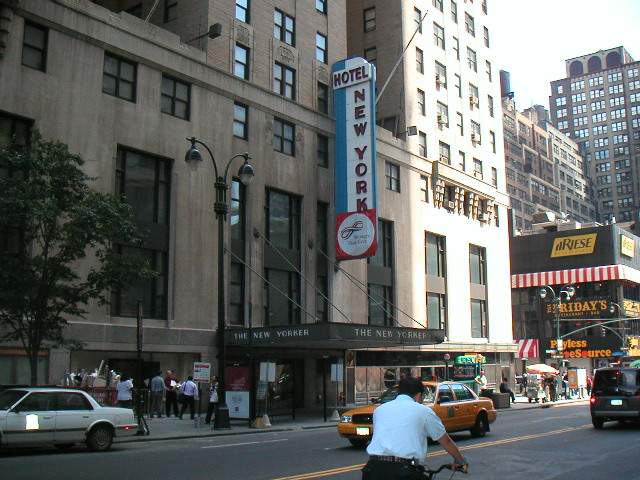 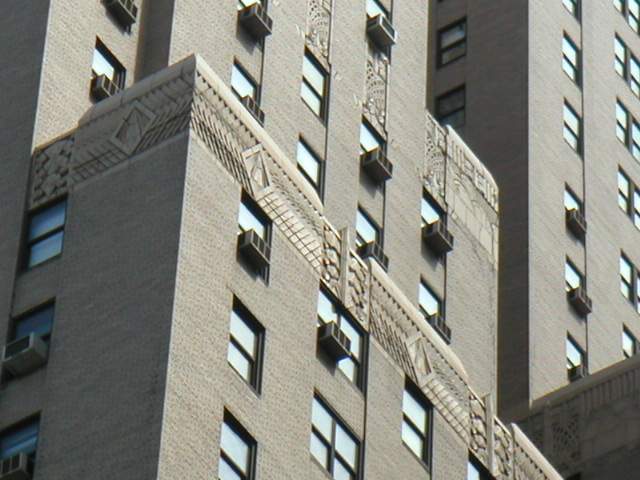 |
|
|
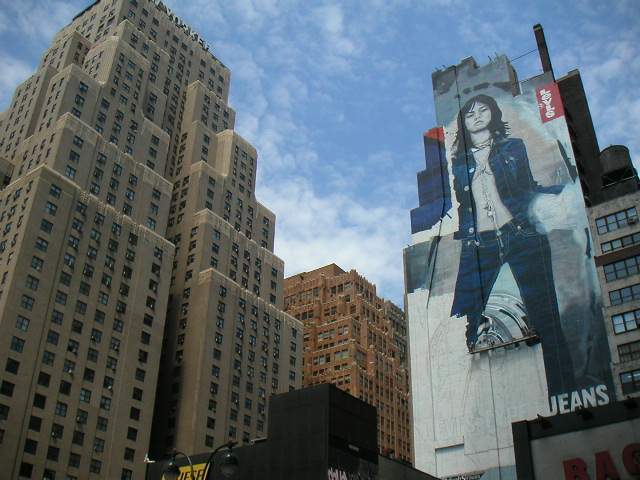 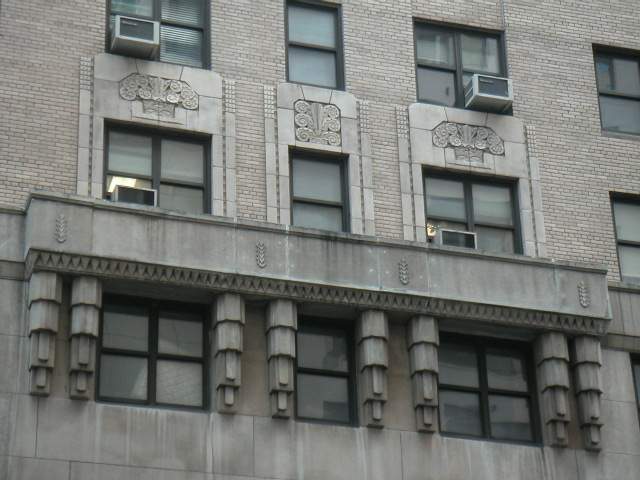 |
|
|
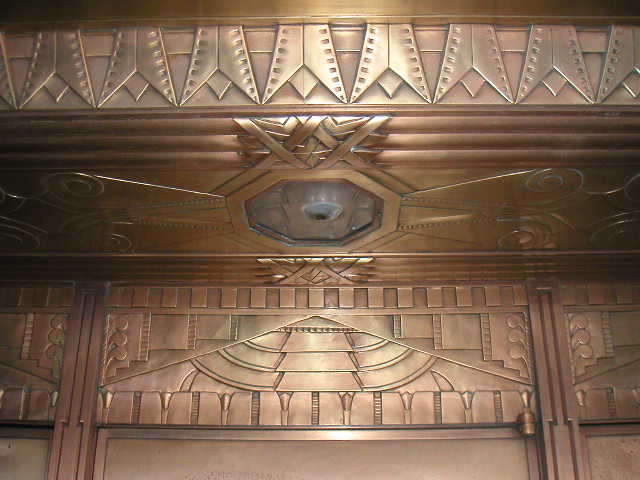 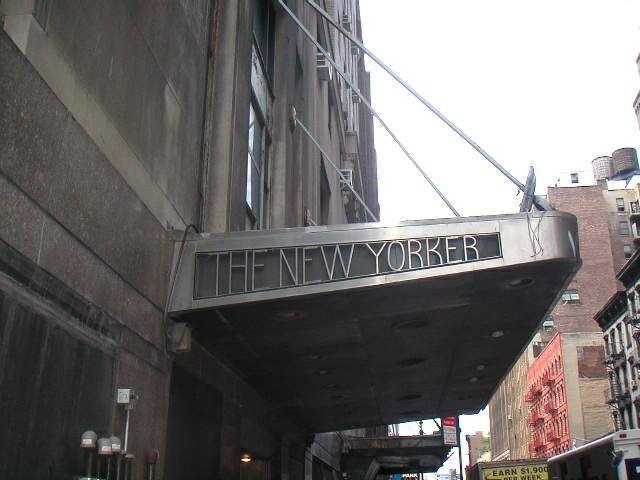 |
The 43-story New Yorker Hotel was built in 1929 and opened its doors on
January 2, 1930. Much like its contemporaries, the Empire State Building
(opened in 1931) and the Chrysler Building (opened in 1930), the New
Yorker is designed in the Art Deco style that was popular in the 1920s
and 1930s. The building's pyramidal, set-back tower structure largely
resembles that of the Empire State Building, which lies just a couple
blocks due east on 34th Street. For many years, the New Yorker Hotel was
New York's largest hotel.
Throughout the 1940s and 1950s the hotel hosted a number of popular Big
Bands while notable figures such as Spencer Tracy, Joan Crawford and
even Fidel Castro stayed here. The inventor Nikola Tesla spent the last
ten years of his life in near-seclusion in Suite 3327 (where he also
died), largely devoting his time to feeding pigeons while occasionally
meeting dignitaries. However, by the late 1960s, with both the passing
of the Big Band era as well as the construction of more modern hotels,
the hotel slowly lost profitability and closed its doors in April 1972.
Different proposals were offered for the use of the building, and in
1975 it was purchased by the Unification Church, who converted the 30th
floor into individual apartments for the True Children. Under new
management and following extensive renovation, the New Yorker Hotel
finally re-opened its doors as a hotel on 1 June 1994. Since 2000 it has
been part of the Ramada franchise. The hotel is currently undergoing
another phase of major renovations as evidenced by a large stuffed Polar
Bear holding a sign that reads "Please Bear Wittus".
The New Yorker Hotel is located at the corner of 8th Ave and 34th Street
in Midtown Manhattan. It is a fully functioning hotel, featuring
spectacular panoramic views of midtown Manhattan from its 39th floor
dining lounge. Diners get a sweeping view of landmarks such as the
Chrysler Building to the north, the Empire State Building and One Penn
Plaza, due east, and lower Manhattan, due south. It is in proximity to
Madison Square Garden, Penn Station, Macy's and the Jacob Javits
Convention Center. Visitors can come by bus, arriving at the Port
Authority Bus Terminal, just a few blocks north on 8th Avenue, or by
train, as Penn Station is across the street.
The New Yorker Hotel also featured pro wrestling from the Ring of Honor
promotion, featuring one of pro-wrestling's most famous matches, Kenta
Kobashi (representing Pro Wrestling NOAH from Japan) facing Samoa Joe
(representing Ring of Honor) in the Grand Ballroom on October 1, 2005.
They would hold their final New Yorker show on June 17, 2006.
Power plant
When initially built the New Yorker Hotel had coal-fired steam boilers
and generators sufficient to produce more than 2200 kilowatts of direct
current electric power. The hotel's own direct current generators were
still in use during the Northeast Blackout of 1965 but by the late
1960's the hotel's power system had been modernized to alternating
current.
|
|
|
|
When built in 1930, this Art Deco hotel was
the largest in New York, with 2,500 rooms, 150 launderers, 92 telephone
operators, 42 barber chairs, 35 master cooks, 20 manicurists, 10 dining
salons, five restaurants and the nation's largest private power plant.
It was the headquarters for Leo Durocher's
Brooklyn Dodgers during the 1941 World Series, and Joe DiMaggio's
home-game home. Big bands led by the likes of Benny Goodman, Woody
Herman and the Dorsey Brothers played here. Electrical genius
Nikola Tesla died in his room here January 7, 1943.
After decades of decline, it was bought by
the Rev. Sun Myung Moon's
Unification Church in 1976, and served as its World Universal
Church. In 1994, the Church reopened part of the building as a Ramada
Inn franchise, under the old name. Woody Allen filmed scenes for
Radio Days and Bullets Over Broadway in the ballroom here.
The largest and tallest hotel in NYC at the
time of its opening, the 43-storey New Yorker is the quintessential
example of the setback style of the Art Deco era. Opened on January 2,
1930 after the expenditure of $22.5 million, it originally incorporated
2,500 rooms, a lavish lobby and two large ballrooms that featured the
crest of both the performers and attenders. Other services included the
world's largest barber shop and kitchen facilities for 155 cooks and
chefs.
Above a three-storey limestone base, a set-back tower of brown brick rises
with the distinctive vertical light courts splitting the facades. 23
elevators service the building, with one for direct entrance to the
North Ballroom from the 35th Street entrance. Moreover, one was built to
connect the hotel to the tunnels from the subway and the nearby old
Pennsylvania Station. To meet the requirements of power generation for
the activities, a separate powerplant was incorporated within the
basement, including also an early air-conditioning unit.
Due to lower and lower revenues, the hotel was finally closed in April
1972, to be acquired in 1976 by Rev. Moon's World Unification Church.
On June 1st, 1994, the New Yorker Hotel Management Co., Inc. returned the
building to hotel use by opening it with 178 renovated rooms. After
that, the number of the refurbished rooms increased steadily, with the
current number of 1,000 rooms reached by the end of the 1990s. The top
three floors house 70 large tower suites and on the top is the panoramic
Sky Lounge. Since 2000 the New Yorker has been a part of the Ramada
hotel chain.
The New Yorker, a marvel of its day, was
the largest hotel in New York with 2,500 rooms. In addition to the
ballrooms there were ten private dining "salons" and five restaurants
employing 35 master cooks. The barber shop was one of the largest in the
world with 42 chairs and twenty manicurists. There were 92 telephone
operators and 150 laundry staff washing as many as 350,000 pieces daily.
This was all supported by America's largest private power plant, which
the New Yorker had installed down in the sub-basements.
With the arrival of the Big Bands, the stage was set for the "heyday" of
the New Yorker Hotel. The famous bands of the day played at the New
Yorker, including Benny Goodman, both of the Dorseys and Woody Herman.
This atmosphere not only drew in business travelers and tourists, but
also attracted the elite of society as well as political figures and
business leaders. The Brooklyn Dodgers, with Manager Leo Durocher,
headquartered here for the 1941 World Series, and Joe DiMaggio lived
here when the Yankees were in town. The 1950's - 60's did not turn out
to be as prosperous as previous years, and The New Yorker closed its
doors in 1972.
In 1994 a new management team hired a highly professional staff and
developed an infrastructure to run a top flight hotel. On June 1st, 1994
The New Yorker Hotel Management Company, Inc. officially re-opened the
building with 178 rooms available to the public. With the completion of
a five-year renovation program befitting the Hotel's grand history, we
now have 1,000 guestrooms available.
More recent additions include the Tick Tock Diner, LaVigna Ristorante,
with delicious Italian cuisine in a warm decor, and a beautiful lobby
lounge serving gourmet coffees and luscious pastries. A talented
catering department has also been developed to serve the Conference
Center and Ballrooms.
Now New York City is experiencing a boom in tourism and business travel.
With the Jacob Javits Convention Center just a few blocks away, coupled
with the sales and marketing efforts of the Hotel's in-house staff and
the 34th Street Business Improvement District, the West Side of
Manhattan, particularly the 34th
Steet corridor, has become increasingly desirable. All this and a lot of
hard work is quickly bringing the New Yorker Hotel to the forefront of
New York City's hospitality business.
|
A 1941 New York City hotel receipt inspires a Brookfield man's
romantic notion for a first-rate
Second Honeymoon
|
|
|
|
|
|
|
By Scott
Radway
THE NEWS-TIMES
BROOKFIELD
When Nat
Sussman found the receipt from his honeymoon stay at the
Hotel New Yorker in 1941, he was struck by a romantic
notion: With his 57th wedding anniversary coming up, why
not return to the same hotel for old time's sake?
Sussman was struck by another idea: Just for the
novelty, why not call the hotel and see if it would
honor the 1941 room rate? So, at the height of hotel
season, Nat Sussman and his wife, Irma, will stay in the
Manhattan hotel again for just $5.50 a night. The 1998
rate is $225.
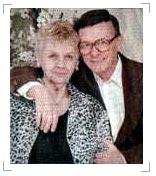
"How could
you not grant that man's request?" said the hotel's
front desk manager Richard Murphy. "It just doesn't
happen every day." "Who would have ever thought the
receipt would come in handy," asked 77-year-old Nat
Sussman, adding that Murphy's initial reaction sounded
"as if I was calling from the grave." For historical
perspective, the Sussmans were married a week after
Pearl Harbor was bombed. Now, parking, at $22.50 a day,
will cost them more than the room. Adding to the
delight, the Sussmans have been booked in the same room
they stayed in on their wedding day, Dec. 14, and on
Dec. 15. "Room 2524," said the enamored Nat Sussman.
|
|
|
|
But
the hotel at 8th Avenue and 34th Street has gone
through some changes. Their old room was
renovated from one bedroom to a spacious suite.
"I've never stayed in a suite before," said
75-year-old Irma Sussman. "It's so exciting."
The hotel will be at least 95 percent full until
Dec. 19, said Murphy. Nonetheless, the Sussmans
will stay Dec. 13 and 14. "He (Murphy) said we
could leave whenever we wanted," said Irma
Sussman. "He's a wonderful angel," said Nat
Sussman. The Sussmans' daughter, Alexandra, will
drive the couple to the hotel, stay in their
room on a pull-out bed and show them around the
city for the two days. Irma Sussman said she and
her husband didn't know what to when they were
in Manhattan the first time, but now, with her
city-smart daughter as chaperone they expect to
see all the sights.
"We
were just kids then," said Irma Sussman. She was
18, he was 20. Nat Sussman, who entered the Army
a year after his wedding, and served until 1946,
said he's a "little nervous" about returning to
Manhattan.
|
|
|
|
Although the couple lived in Brooklyn after they
were married and then moved to Syosset, Long
Island, where Nat Sussman built a successful
career as a uniform salesman, they have not been
back to Manhattan since 1941.
Nat
Sussman said he found out recently that Radio
City Music Hall doesn't show movies any more.
Alexandra Sussman has purchased tickets for them
to see "The Phantom of the Opera" at the
Majestic Theatre on Monday, their anniversary
day.
Irma Sussman said she thought most of Broadway
was normally closed on Mondays. "It's like a
message from above," she said. "It's like it's
open just for us." If all goes well, said Nat
Sussman, maybe they'll go back for their 60th
anniversary, too—if the rate's still reasonable.
The
Sussmans retired years ago and moved from
Syosett to Rollingwood Condominiums in
Brookfield.
|
|
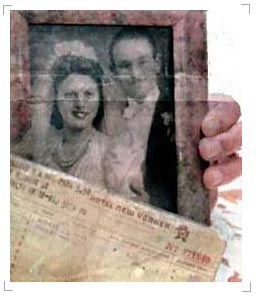
|
|
|
From a 1938 brochure for the New Yorker Hotel.
A pictorial review of the New Yorker, Manhattan's largest and tallest
hotel, located at 8th Avenue and 34th Street, New York City. Ralph Hitz,
Managing Director. A vertical village, where every vote of the citizens
sends two thousand servants scurrying to satisfy their daily whims, is
making history in the heart of New York. This town, which rises instead
of spreads, reaches 43 stories toward the skies at Thirty-fourth Street
and Eighth Avenue—The New Yorker, Manhattan's largest and tallest hotel.
The New Yorker is a vertical city, for without stretching a point to
make a phrase, it includes everything that any town has—and in many
aspects, much more.
Bellmen smart as West Pointers on parade reach for your bags when you
enter the lobby through the tunnel from the Pennsylvania station or step
off the B. and O. railroad motor coach at the door. In this great
hospitable lobby you immediately sense the luxury and completeness of
New York's biggest hotel. Everything moves swiftly and smoothly, without
friction or flurry twenty clerks are on duty at the huge front desk and
it seems to be only a moment until you are registered and on the way to
your room.
The season is the only limit on your appetite in the Terrace Restaurant,
known in millions of homes throughout the United States through the
four-nights-a-week broadcasts over the nation-wide chains of the
National Broadcasting Company. Its simple elegance makes it outstanding
among dining salons. The superb service here is entirely a la carte,
except at breakfast, when there is a seventy-five cent club meal, and at
luncheon when club luncheons are featured at various prices. This
restaurant is open again at six for breakfast.
World-famous orchestras interpret the syncopated rhythms of today nightly
through the dinner hour and during supper in the Terrace Restaurant,
except Sunday when there is dancing only at dinner. There is no cover at
dinner; after ten o'clock at night it is one dollar except on Saturdays
and holidays when it is two. A concert orchestra plays during luncheon.
Made-to-order weather cools this room, as it does all the other New
Yorker restaurants and public rooms, so on even the hottest days of
summer you can dine and dance without the slightest degree of
discomfort.
The Manhattan Room is a delightfully informal restaurant, opening off the
main lobby, where the matchless quality of the food is equaled only by
the swift, unobtrusive service. Here, also, you find that elusive modern
note characteristic of The New Yorker. The walls are built of Persian
Walnut, inlaid with solid bronze, and the windows, facing Thirty-fourth
Street, are notable for the exquisite craftsmanship of their carved
glass. Prices are reasonable with club dinners at $1.50 to $2.00 and
luncheons at 75 cents to $1.25.
Down in great kitchens that cover an acre of floor space, one hundred and
thirty-five of the world's most famous cooks have dedicated their lives
to the service of your appetite. Here is delivered each day the choice
of the world's finest food products to be made into palate-pleasing
delights for the 10,000 appetites which daily endorse The New Yorker's
cuisine. Even the breads, pastries and ice creams are made by our chefs,
in these kitchens that are as sweet and clean as mother's cookie jar.
In the Empire Tea Room there is all the grace and charm of France under
the Napoleonic era which inspired its green and gold decorations.
Bright-faced girls in quaint French provincial costumes serve you
breakfast, luncheon, dinner or supper. Here there is a soda fountain and
here, too, is the New Yorker Candy Shop where you will find New Yorker
Bonbonettes, the delicious new French candies. Food prices are
reasonable—breakfast 35 cents and up; luncheon 75 cents; dinner one
dollar; supper a la carte.Quick counter service is provided for you in
the Coffee Shop, located in the lower lobby. It is open until nine
o'clock each night. Breakfast is a la carte; luncheon is 60 cents and
dinner is 90 cents. In the Coffee Shop the food is served in all the
delicious variety of the other three restaurants, for regardless of what
you pay or in what restaurant you dine at The New Yorker you are assured
of the same high quality and wholesome flavor. The Coffee Shop has an
entrance to Eighth Avenue as well as a lobby entrance.
Twenty-three elevators, speeding at 800
feet a minute, travel 900 miles a day to carry you up to your room. All
are self-leveling and automatic and they represent an investment of
three-quarters of a million dollars. Operating at fully capacity they
could transport the entire population of a city of 200,000 people in
twenty-four hours. A special elevator serves the four function floors
and another special elevator connects the lobby to the Pennsylvania
station tunnel and to the new Eighth Avenue subway express when
completed
Priceless murals, gold-illumined ceilings, carved glass and inlaid Persian
walnut have been deftly adapted for the modern setting of the Grand
Ballroom.
The foyer opens into the lobby mezzanine and a grand staircase connects it
conveniently to the lobby itself. The Grand Ballroom accommodates 800 at
a luncheon or diner and 1000 for dance or meeting. The balcony is
accessible from both the ballroom floor and the function lounges on the
third floor. The ballroom and other public rooms are air-cooled in
summer.
Modern beauty and luxurious appointments distinguish the lounges and
foyers. The very mode of the moment is mirrored in the striking
decorations which reflect all the spirit and smartness of today. The
spacious ballroom foyer on the second floor is decorated with murals by
Louis Jambor, who also painted the murals for the lobby and Grand
Ballroom. Third floor lounges open into the ballroom balcony, the beauty
salon and private dinning salons A, B and C. And here are many quiet
corners with restful chairs and deep, comfortable divans where you may
meet your friends.
The North Ballroom conveys an atmosphere of formal elegance. Essentially
in the modern note it is a perfect locale for either social or business
occasions. It accommodates three hundred and thirty persons for a
luncheon or dinner and four hundred at a dance or meeting. Special
service kitchens provide quick, flawless service to the two ballrooms.
The North Ballroom also is air-cooled and is quickly accessible from the
lobby by a grand stairway and the lobby mezzanine. It also is served by
the special function elevator from the Thirty-fifth street entrance of
the Hotel.
The ten private dining salons, located conveniently on the third and
fourth floors, accommodate from twenty-five to one hundred and fifty
persons for a meeting, luncheon, dinner or dance. The private dining
rooms also are served by the special function elevator and are connected
with special banquet kitchens to provide quick, smooth service. The
decorations have been carried out in varied period motifs and the
furnishings are striking examples of contemporary beauty and luxury.
Every bedroom has a radio loud speaker with a choice of four programs;
both tub and shower bath; Servidor; circulating ice water; hand
telephone; bed-head reading lamps; full-length mirror and full-sized
beds. Every room has two or more windows and all rooms are outside and
flooded with light and air. Floor secretaries on each floor take your
messages when you are out and prevent the annoyance of standing in
crowded lines in the lobby to receive your mail and keys.
The New Yorker has more than one hundred
suites consisting of a parlor and one bedroom or a parlor and two
bedrooms. The parlors have radio and Servidor. Some have disappearing
beds and an extra bath. Others have private sky-terraces or roof
gardens. Suites are available for as little as eleven dollars a day.
Bedroom rates start at $3.50 a day for one person; $5.00 a day and up
for two persons with double bed; and $5.50 a day up to two persons with
twin beds. Rates are fixed and are posted in each room.
Bathrooms are marvels of modern beauty and convenience. The walls are
finished in black and sea-green tiling and the fixtures are in chromium
nickel. The towel racks above the medicine cabinet are generously filled
with extra large bath, face and hand towels and a special radiator keeps
the room comfortably warm in the winter. There is a double socket
bedside the mirror to connect curling irons or massage machine.
Many suites open into sky-terraces where you can literally say "Good
morning, Mr. Sun!" from these private roof gardens the whole vivid,
far-flung panorama of New York lies at your feet in an animated tapestry
of magic color and up here, a tenth of a mile above the street, you seem
to be in a world apart. Far below you the lights of Times Square paint
the darkness with splashes of flame and the Hudson cuts through the
twilight haze like a silver ribbon. Room service will serve your dinner
on your terrace if you wish.
The exquisite luxury and the compelling beauty of the ladies' lounge on
the third floor are delightfully refreshing. An unusual feature is a
series of tiny "powdering rooms" where milady, assisted by
specially-trained French maids, can apply her cosmetics with the same
privacy she finds in her our boudoir, and here also is a commodious
checkroom for ladies attending functions in the ballrooms and dining
salons and adjoining it is one of the famous Terminal Beauty Salons. The
public stenographer's office is outside.
The beauty salon is truly a dream of green and orchid and silver. Walls of
mosaic tiles in mauve and ivory and blue! Curtains of apple green shot
with gleaming silver ivory chairs smartly upholstered in shiny patent
black leather. And throughout this salon you will find the smooth
perfection and correctness of service that characterizes truly authentic
fashion. A shampoo? A wave? A facial? Each takes on a thrilling new
loveliness under the skilled fingers of any of the thirty-two
attendants. Open from nine a.m. till seven p.m.
And here is the largest barber shop in the world! Forty-two chairs and
twenty manicurists. Seldom do you have to wait here, but if you want to
be sure to have a barber ready for you, make an appointment by telephone
from your room. The shop is operated by the Terminal Barber Shops, Inc.,
whose twenty years of experience in the nation's greatest cities enable
them to perform the ten-point Terminal promise of the most perfect and
hygienic standards in modern barbering practice. The shop is located in
the lower lobby.
A quarter of a million-dollar radio system gives you entertainment and
diversion in your room at the turn of a dial. The elaborate receiving
apparatus, containing seventy-two tubes, gives you a choice of four
programs. Special apparatus enables us to bring you programs from
foreign counties. Twenty-five miles of wires carry the programs to the
2500 loudspeakers in the rooms and to the amplifies in the ballrooms,
private dining salons and other public rooms. The volume of sound from
the speakers is automatically controlled to prevent guests from being
annoyed by noise.
The New Yorker's private laundry with its one hundred and fifty employees
and half-million dollars worth of machinery is capable of handling the
entire family washing and ironing of a city of thirty thousand. It not
only launders the thirty-two acres of sheets, the sixty-five miles of
toweling and the other three hundred thousand pieces of linen used in
the hotel, but a special guest department enables you to have your own
laundry back in your room before six o'clock at night if the laundry
receives it before ten in the morning. The valet department gives you
half-hour service on pressing night and day.
Seventy-eight feet below the sidewalk is the largest private power plant
in the world. Five steam engines and oil-burning Diesel engine produce
enough light, heat, power and refrigeration for the average city of
thirty-five thousand people. Compressed air forces pulverized coal under
the furnaces and blows the ashes out again. The engineering equipment
includes the air-cleaning machinery which draws in air on the roof,
washes and purifies it, and then forces it down into the restaurant,
lobby, ballrooms and other public spaces.
The nimble fingers and quick minds of ninety-five telephones operators
handle ninety-one incoming trunk lines, thirty-eight outgoing trunk
lines and ten direct long-distance trunk lines in the huge telephone
exchange on the forty-first floor. The system includes thirty-two
hundred phones. In addition to this tremendous telephone system, the
communication facilities of branch offices of both Western Union and
Postal Telegraph are at your service in the main lobby. Messages for you
in your absence from your room are taken by floor secretaries.
Located at Thirty-fourth Street and Eighth Avenue, The New Yorker is
quickly accessible from the Holland Tunnel and the Jersey Tubes. A
tunnel connects it to the Pennsylvania and Long Island trains and I.R.T.
subways systems. When the new Eighth Avenue subway is completed in 1931
there will be express station almost within the hotel. The theatrical
district and smart shops are a stone's throw away; the important piers
nearby.
Almost every other service or convenience is found within the four walls
of The New Yorker. A ten-room hospital on the fourth floor is open night
and day; a theater ticket office buys amusement tickets at legal rates;
the transportation department obtains your steamship, airways and
railroad tickets; the flower shop and candy shop will deliver gifts
anywhere; and for your convenience there are several shops on the lobby
floor.
|
|
|
|
contact
|
nyc-architecture.com
|
| |
http://www.hotelnyr.com/
|


























